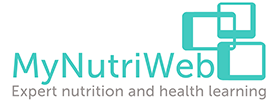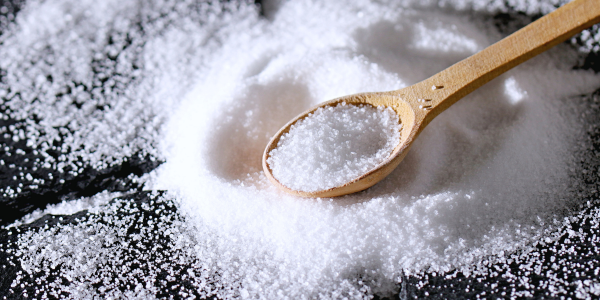
By Sonia Pombo, RNutr (Public Health), Campaign Lead for Action on Salt and Research Fellow
May is home to a number of important public health campaigns. Firstly, there is May Measurement Month, which aims to get people measuring their blood pressure and taking proactive steps to reduce it, and secondly, Stroke Awareness Month. Both address two very important health messages, and bring to light the importance of prevention for improved public health. May is also the new home to Salt Awareness Week, which ties these two campaigns in a neat little bow. Decades of consistent, high-quality research has linked excessive salt intake to raised blood pressure, a major risk factor for heart attacks and strokes and the leading causes of death and disability worldwide.
The UK, like many other countries, is eating too much salt – 40% higher than the recommended limit of 6g/day. Whilst that might not sound like a significant amount, at a population level it has a profound effect. For every 1g reduction in population salt intake, it’s thought that more than 4,000 premature deaths could be prevented each year, with annual health savings to the NHS at £288million.
We should all be doing what we can to reduce our salt intakes, but much of our food unfortunately comes ‘ready salted’ whether we want it or not – and we can’t take it out once it’s been added in. More than 75% of the salt in our diet is added to our food by the food industry, and it’s added to everything, from everyday staples to indulgent treats. Salt is added to bread, ready meals and sauces, even in biscuits, cakes and hot chocolate too.
So what are the key sources of salt to UK diets? Here are the top 5:
Bread
Bread is a household staple, with over 60 loaves brought per person every year. Bread alone accounts for 14% of our daily intake of salt, making it the largest contributor to salt in our diet. Small reductions in the salt content of bread are therefore especially important. Typically you would find 0.34g salt in just one slice – pair that with some spread and sandwich fillings and before you know it your lunchtime sandwich contains more than a third of your maximum recommended limit!
Bacon
Bacon is eaten in a wide variety of occasions, be it in your morning bacon roll, as an ingredient in home cooking, ready meals, sandwiches and even salads. It’s thought we buy more than 150,000 tonnes per year! Yes, it does taste salty, but Action on Salt’s survey in 2020 found some bacon contained nearly four times more salt than competitor brands. Two rashers typically contain 1.5g salt. Limiting red and processed meats is also recommended to reduce cancer risk and importantly, we must consider that reducing intakes of such foods is also of benefit towards achieving sustainable diet goals.
Ready meals
Ready meals are hugely popular in the UK. We have access to a plethora or different types, suiting a variety of different dietary preferences and eating occasions, and they are super convenient for many. But depending on the brand and cuisine, they can contain excessively high levels of salt. Dishes with generous amounts of sauce e.g. curries or Chinese dishes are obvious culprits, but ever increasing interest in veganism has also seen a rise in plant based ready meals. Whilst these may appear healthier, on closer inspection they often contain similar, if not higher levels of salt and so like their meat counterparts, should be limited and only eaten in moderation as part of a healthy balanced diet.
Cheddar cheese
Cheddar cheese is eaten almost daily in lunchtime sandwiches, grated on pasta dishes or consumed as a snack – cheese is a big part of our diet, bought by the majority of UK households. The nations favourite, cheddar, contains on average 0.54g in one 30g portion. Softer cheeses are typically lower in salt. Compare labels and try to stick to a portion of 30g which is about the size of a small matchbox.
Pizza
Whether it’s a last minute purchase from the local shop after a hard days work, or a family Friday night takeaway, pizzas are a firm favourite in UK households. But the culmination of various salty ingredients – bread, cheese and salty meat toppings – can result in an excessively salty meal. Takeaway pizzas are of particular concern, as seen in Action on Salt’s report published just this week, which found more than two thirds of restaurant and takeaway pizzas had 6g or more salt, in just 1 pizza!
We need a collective effort on all fronts, from individuals, to Government and the food industry, each doing their bit to get salt intakes down. A stronger onus should undoubtedly be placed on the companies who add salt to our food – changes made directly at the source will also have the added benefit of addressing the availability of healthier food and, if done correctly, benefits the whole population from all walks of life. But that shouldn’t stop us from doing our bit. Simple swaps and tweaks to our cooking habits will gradually shift our taste preferences to less salt, which will lower our blood pressure and reduce our risk of heart attacks and strokes. And what better time to start your lower salt diet, than May!
Tips for eating less salt
There are lots of things we can all do to reduce our salt intake. Here are 6 top tips to reduce our salt intake:
- Gradually add less salt to your favourite recipes. If you find you cook a lot from scratch, then this would be a great first step. Going cold turkey isn’t for everyone, but gradual reductions – 1 less pinch here and there – will allow your taste buds to adapt
- There are many other seasonings at your disposal! Use herbs, spices, garlic and citrus to add flavour to your dishes in place of salt. Drain and rinse canned vegetables and beans if they are stored in salted water
- Check food labels before buying. The salt content varies greatly depending on which food or brand you buy from – switching to lower salt alternative might be just as tasty
- Adding salt is often done through habit, without necessarily tasting the food first. An easy win would be to remove salt shakers and salty condiments from the table. This is especially helpful for ensuring younger family members don’t develop the habit of adding salt to their food
- Use health apps to help make more sense of labels! Apps such as FoodSwitch allow you to scan the barcodes of your food and instantly see whether they are high, medium or low in salt. It also searches the database for similar but healthier alternative products, making it easier than ever to switch to healthier food choices.
For more tips on how to reduce your salt intake, please visit www.actiononsalt.org.uk
Summary
We should all take active steps early on in life to prevent health complications in the future. Having a healthy balanced diet, staying physically active, getting enough sleep, being aware of your numbers including blood pressure readings are important lifestyle factors we can make towards staying healthy. Whilst there are many parts to the story of healthy lifestyles, limiting salt intake should never be ignored – with evidence so strong to show the benefits of keeping intakes below maximum recommended levels. If we make changes early on, our future selves will thank us for it.
YOU MAY ALSO BE INTERESTED IN
THE UK SALT CHALLENGE
REDUCING BLOOD PRESSURE
– AN EFFECTIVE APPROACH






